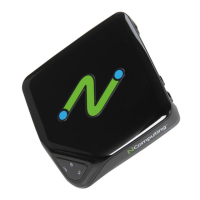
Do you have a question about the NComputing L300 and is the answer not in the manual?
| Networking | 10/100 Ethernet |
|---|---|
| Power Consumption | 5W |
| Category | Desktop |
| Form Factor | Thin Client |
| Max Resolution | 1920 x 1080 |
| USB Ports | 3 x USB 2.0 |
| Audio Output | 3.5mm stereo output |
| Storage | No local storage |
| Graphics | Integrated |
| Ports | 1 x RJ45, 3 x USB 2.0 |
Key hardware specifications and differences between the L300 and L350 access devices.
Specifies the necessary hardware and software for the vSpace Server host computer.
Step-by-step guide to installing the NComputing vSpace Server software.
Details for installing vSpace Server on Windows 7 and Windows 8 operating systems.
Procedure for registering vSpace Server software via the internet.
Procedure for registering vSpace Server software using email.
Instructions for downloading and installing the latest vSpace Server software versions.
Steps to remove the vSpace Server software from the host computer.
Physical connection and setup for L300 and L350 access devices.
Setting up DHCP or static IP addresses for L-series devices.
Procedures for updating the firmware on L-series access devices.
Configuring how devices find and connect to available vSpace Server hosts.
Organizing and managing devices into logical groups for easier administration.
Configuring automatic login, user credentials, and kiosk mode.
Configuring device network interface, IP, and optimization.
Enabling password protection for device configuration access.
Selecting methods for updating device firmware.
Steps to diagnose and resolve issues where no network is detected.
Troubleshooting server connection failures and unexpected disconnections.
Initial setup guide for vSpace Server and its registration process.
Instructions on how to connect L-series devices to the vSpace Server.
Configuring common, L-series, and performance settings for the server.
Saving device settings as a reusable configuration profile.
Modifying existing profiles and distributing them to devices.
Viewing active sessions, user details, and session status.
Configuring device login behavior and network parameters.
Managing device passwords and firmware update methods.
Activating remote console support on host systems.
Understanding feature accessibility via local vs. remote console.
Remotely viewing and controlling user sessions for troubleshooting.
Performing remote firmware updates on multiple devices.
Steps for deploying and configuring new devices for a computer lab.